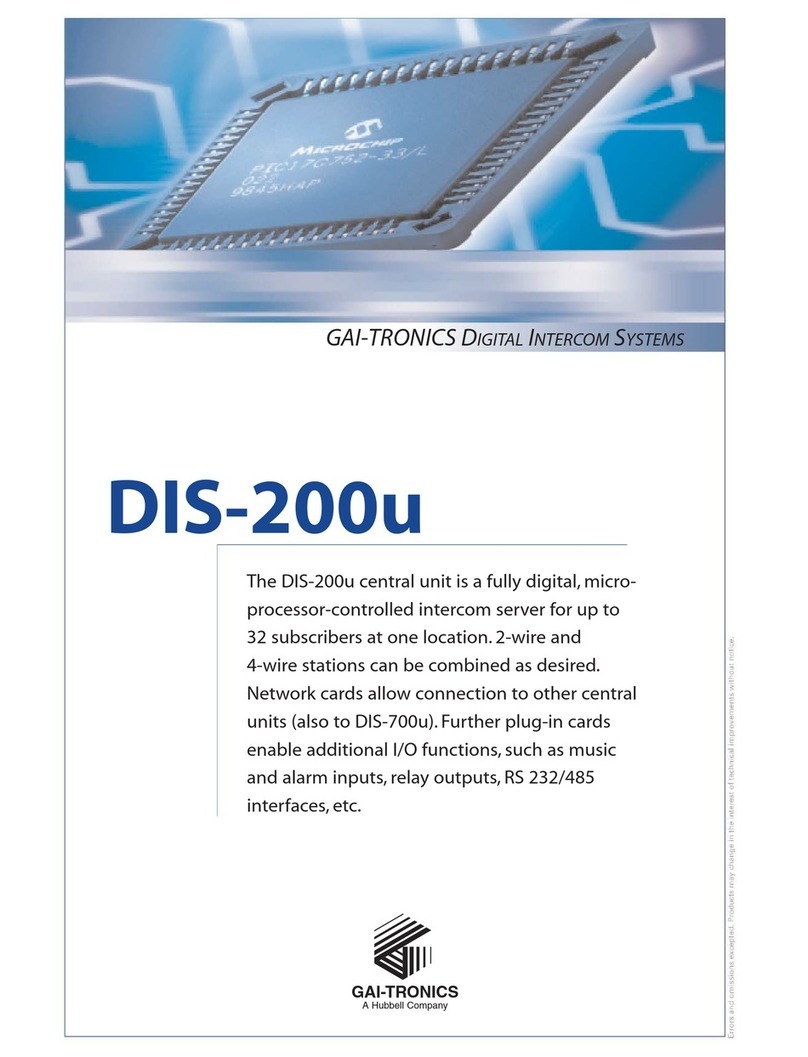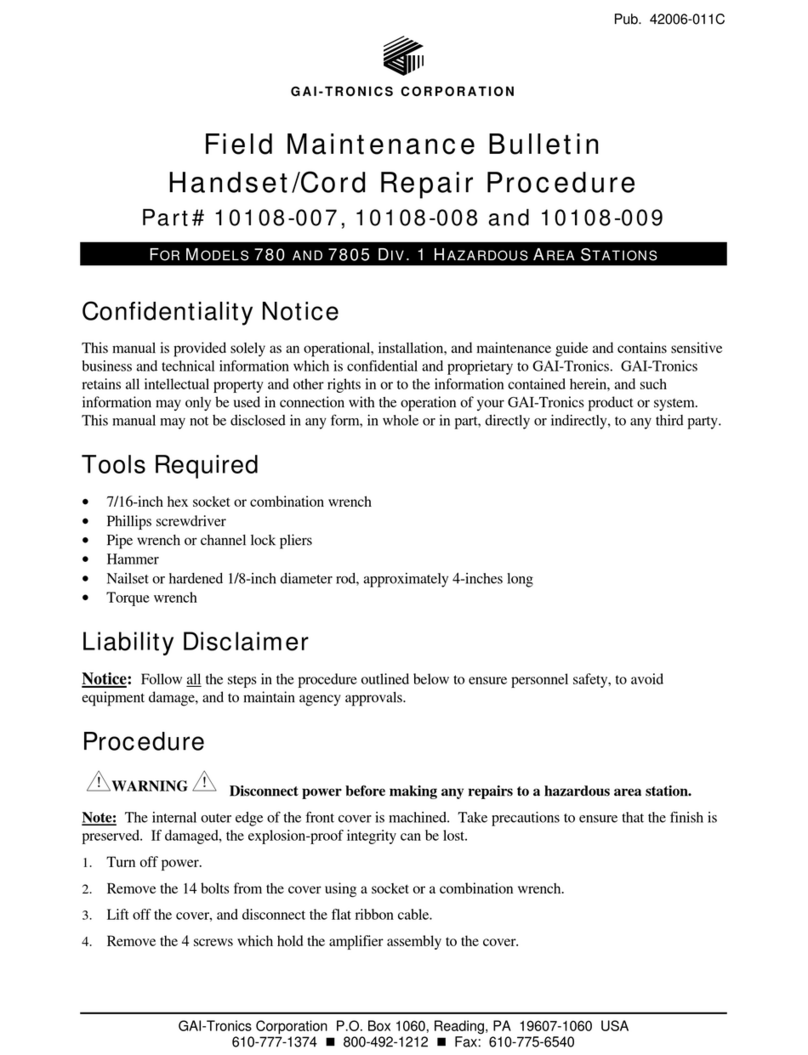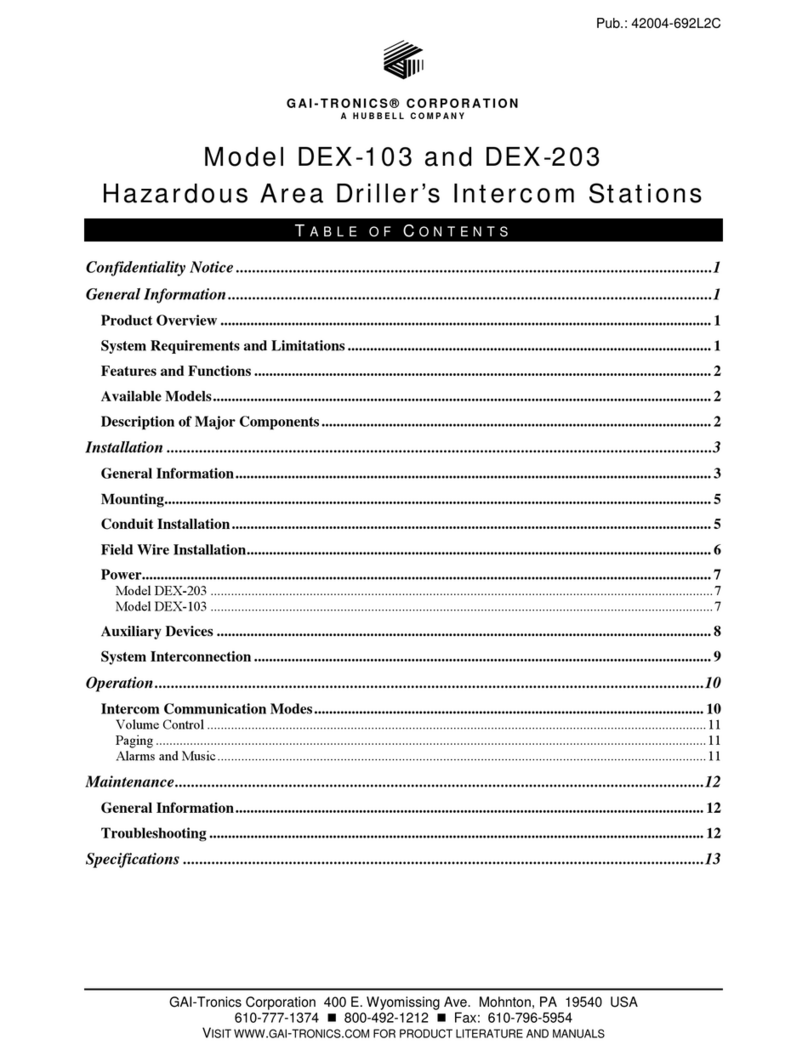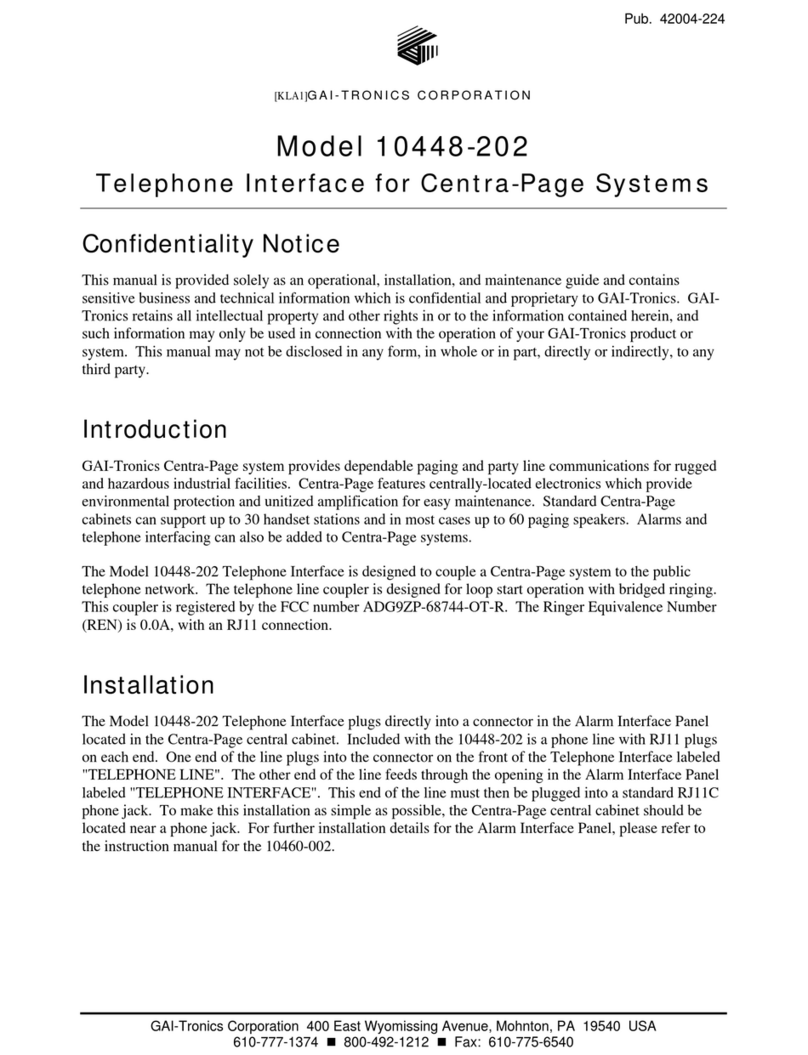
Pub.: 42004-383D
GAI-Tronics Corporation 400 E. Wyomissing Ave. Mohnton, PA 19540 USA
610-777-1374 800-492-1212 Fax: 610-796-5954
VISIT WWW.GAI-TRONICS.COM FOR PRODUCT LITERATURE AND MANUALS
GAI-TRONICS® CORPORATION
A HUBBELL COMPANY
Model DHS/DHF Series
Digital Intercom Stations
TABLE OF CONTENTS
Confidentiality Notice.....................................................................................................................1
General Information.......................................................................................................................1
Product Overview ...................................................................................................................................1
System Requirements and Limitations.................................................................................................1
Features and Functions ..........................................................................................................................2
Available Models.....................................................................................................................................3
Wall-Mount Handset Intercoms (Indoor/Outdoor) ...............................................................................................3
Wall-Mount Hands-free Intercoms (Indoor/Outdoor)...........................................................................................3
Flush-Mount Hands-free Intercoms ......................................................................................................................3
Description of Major Components........................................................................................................4
Installation ......................................................................................................................................5
General Information...............................................................................................................................5
Station Placement .................................................................................................................................................5
Mounting..................................................................................................................................................6
Models DHS-101, DHF-101, and DHF-102 .........................................................................................................6
Models DHF-103 and DHF-104 ...........................................................................................................................7
Conduit Installation................................................................................................................................8
Metallic Conduit Installation Details ....................................................................................................................8
Field Wire Installation............................................................................................................................9
Power ....................................................................................................................................................................9
System.................................................................................................................................................................11
Audio ..................................................................................................................................................................11
Audio Level Adjustments ...................................................................................................................................12
Switch Configuration..........................................................................................................................................15
Inputs ..................................................................................................................................................................16
Outputs................................................................................................................................................................16
Operation.......................................................................................................................................18
Hands-free Operation...........................................................................................................................18
Handset Operation................................................................................................................................18
Headset Operation................................................................................................................................19
Paging.....................................................................................................................................................19
Alarms and Music.................................................................................................................................19
Status Indication...................................................................................................................................20
Call Status ...........................................................................................................................................................20

































